Redefining the Pentatonic Scale
The first step in learning the Hefni Pentatonic System is to redefine the basic pentatonic scale. Most guitarists know the major and minor pentatonic scale shapes. Also guitarists also know that both are essentially the same scale starting on different notes. Since these 2 scale shapes already have names, we will retain them for the purpose of this course. The 3 other pentatonic scales associated with the major and minor pentatonic however do not have names or at least have not themselves been generally accepted as yet.
Disclaimer:
There isn’t a singular world authority when it comes to musical scale names and naturally, there will be some contention or disagreement as to whether a specific name is appropriate. It is not the intention of this article nor this writer to misappropriate any scale name. I simply wish to have a starting point from which to alter the scales in order to avoid confusion later on. So apologies in advance.
You would already know the major and minor pentatonic scales shown on the right in the key of G.
Nevertheless, the 3 scales below belong to the same family but have yet to be officially named in western music. Nonetheless, these scales exist in other cultures and we will retain those names for this course.
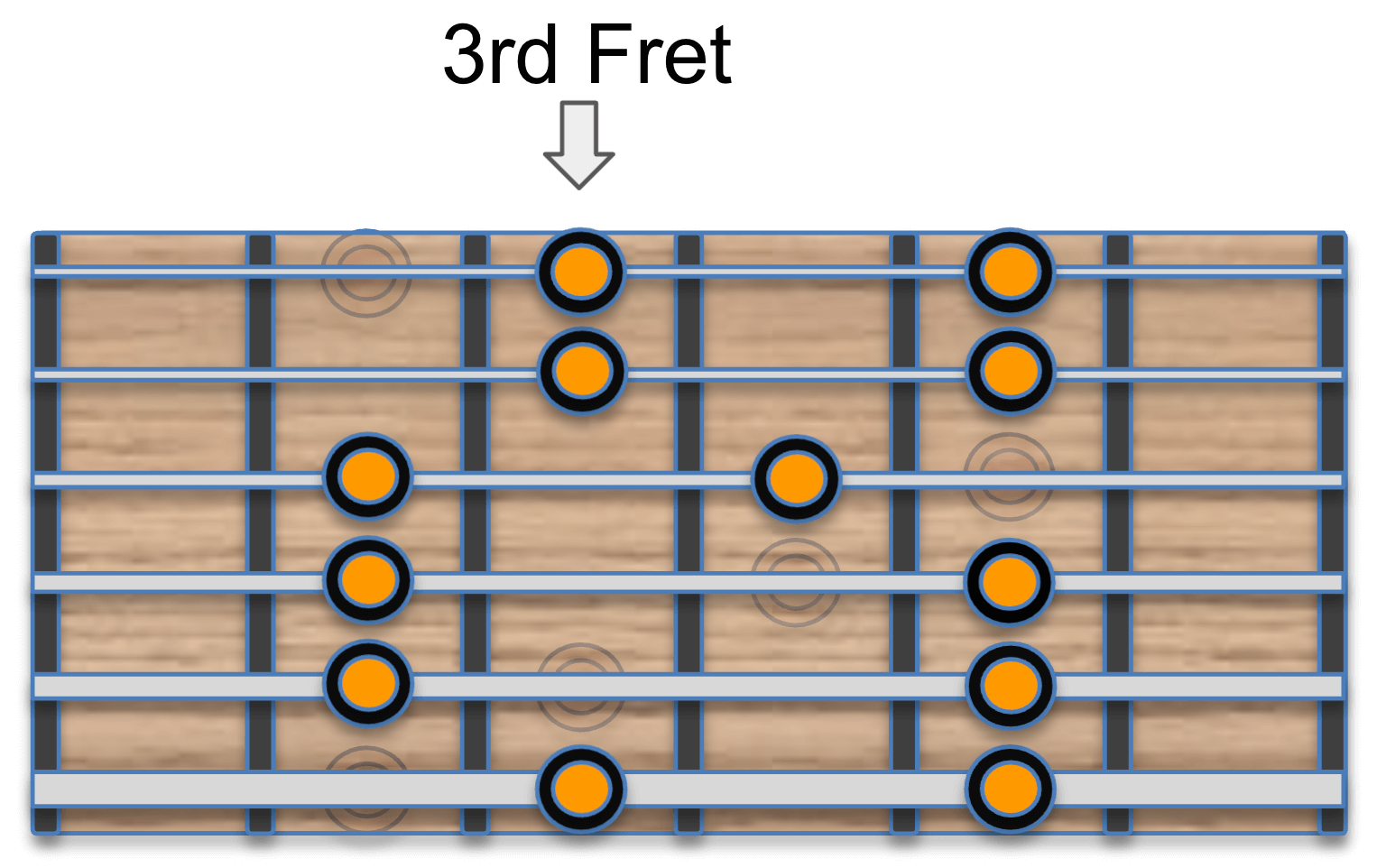
The Major Pentatonic Scale

Minor Pentatonic Scale
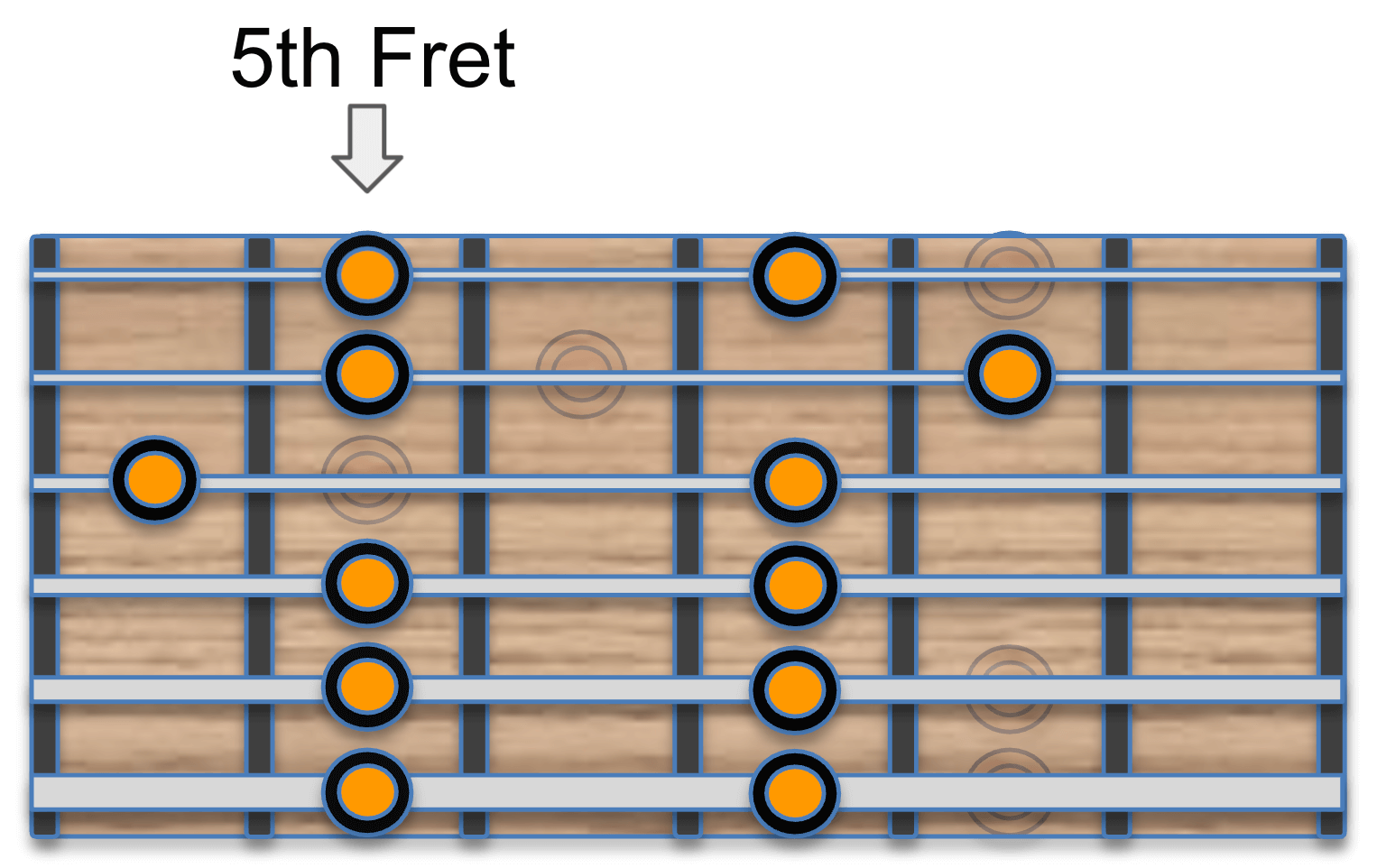
The Egyptian Scale
The fretboard diagram on the left shows the next pentatonic scale shape after the G major pentatonic scale. In many circles, this is called the “Form 2” of the major pentatonic scale. However, if we extrapolate the note order we get the scale formula below.
Root, 2nd, 4th, 5th and b7th.
Depending on who you ask, this 5 note scale is found in various cultures around the world, for instance in Chinese traditional music, Moroccan music, and of course in western music. where it has even been called the “Suspended Pentatonic”.
Nonetheless, my research has shown that most sources when dealing with this scale shape refer to is as the “Egyptian scale”. It is unclear whether this scale is a modern Egyptian scale or of ancient Egyptian origins, or whether it has anything to do with Egypt at all. However, because this is the most common name when referring to this scale shape, it is for this reason we are adopting it for this system whether or not it is correct.
Again the purpose of naming the scale pattern is only to have a starting point of reference in order to avoid confusion later on.
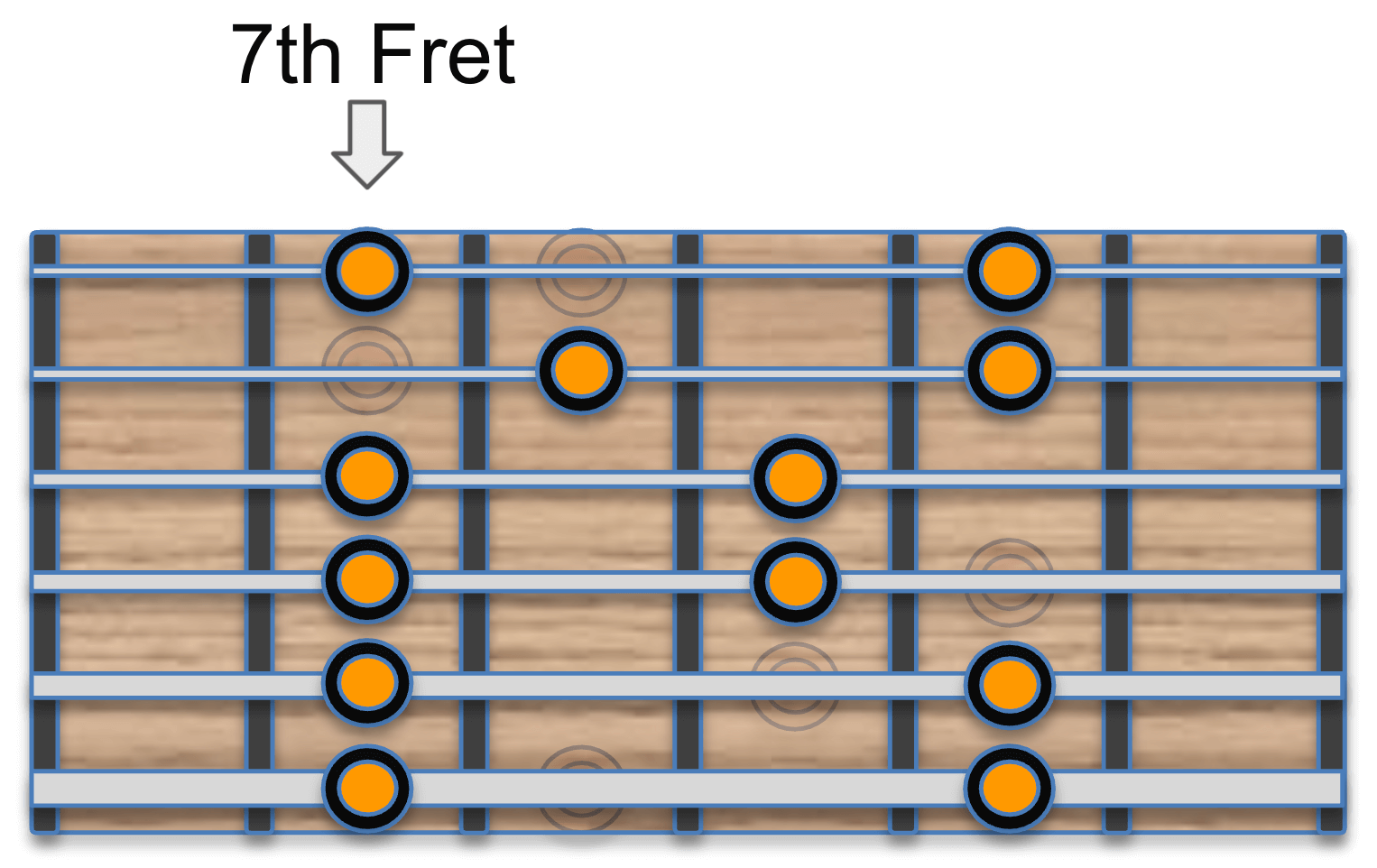
The Banshiki-Cho Scale
The next pentatonic scale shape in the G major pentatonic scale is shown on the left. Guitarists sometimes call this Form 3 pentatonic. Its scale formula is:
Root, min3rd, 4th, b6th and b7th.
This pentatonic scale is shared various cultures but particularly in traditional Japanese music in which it has been named the Banshiki-Cho (Scale). While there are many variants, western researchers have used the name Banshiki-Cho to refer to this specific order of intervals. As such we will simply be adopting this name for this course moving forward.
The images shown below right is taken from Guitar Reference Guide: Scales by Joe Charupakorn. (1999)
This scale has also been called ‘Blues Minor’ however, this will definitely cause more confusion for obvious reasons. As such, we will be sticking to Banshiki-Cho (pentatonic).
The next scale has been called by 3 different scale names. It is for because of instances like these that we need to simply select one name and roll with it. Its 3 names are
1. Ritsu Scale (see image below right)
2. Ritusen Scale
3. Scottish Pentatonic Scale
As demonstrated, there isn’t really one common standard for naming of scales. As such, there will be some contention as to who is right and who is wrong.
With regards to this course however, we are more interested in the shape of the scale on the fretboard. We may choose a name for a scale shape but you may prefer to use another name. That is fine.
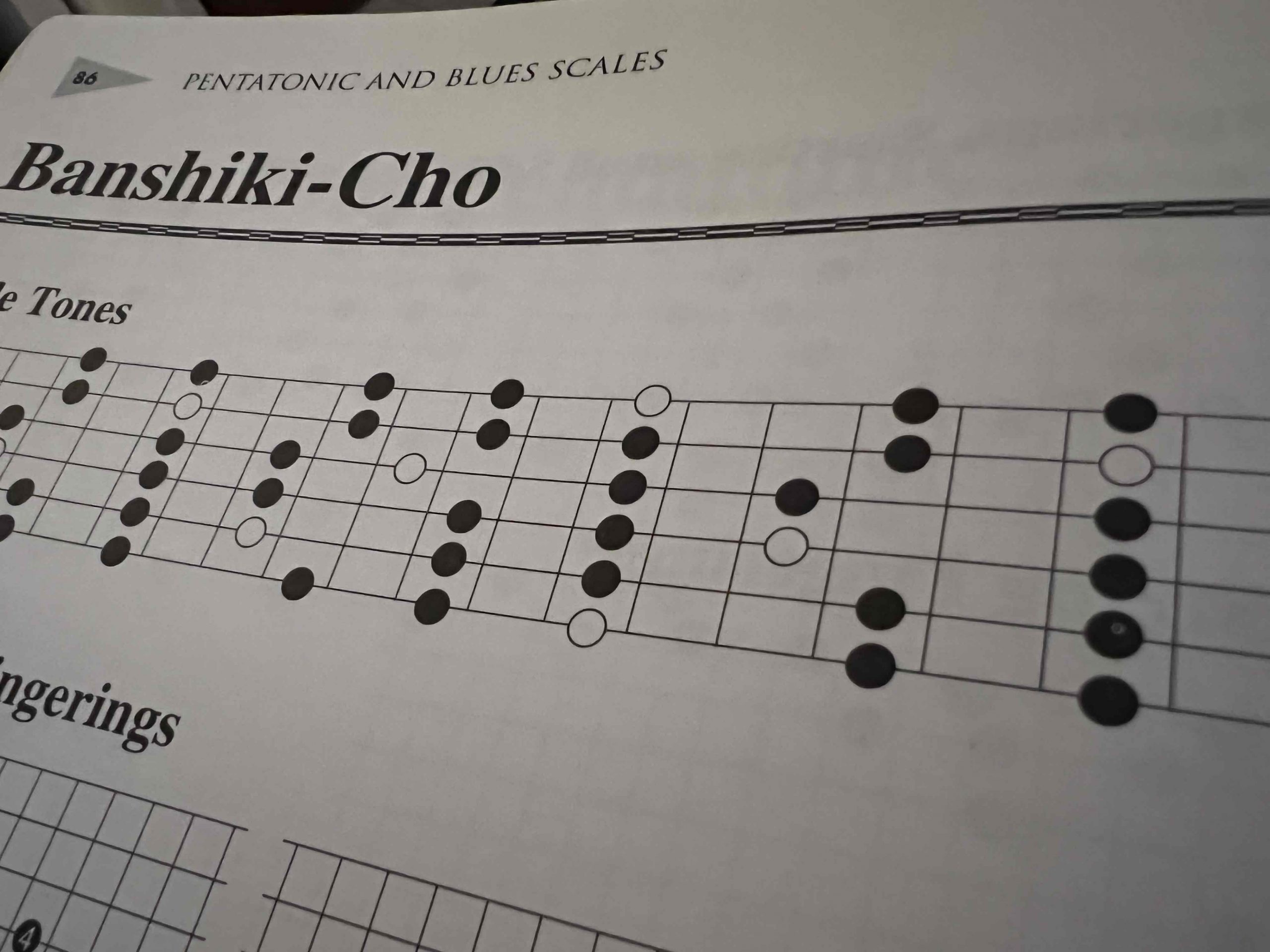
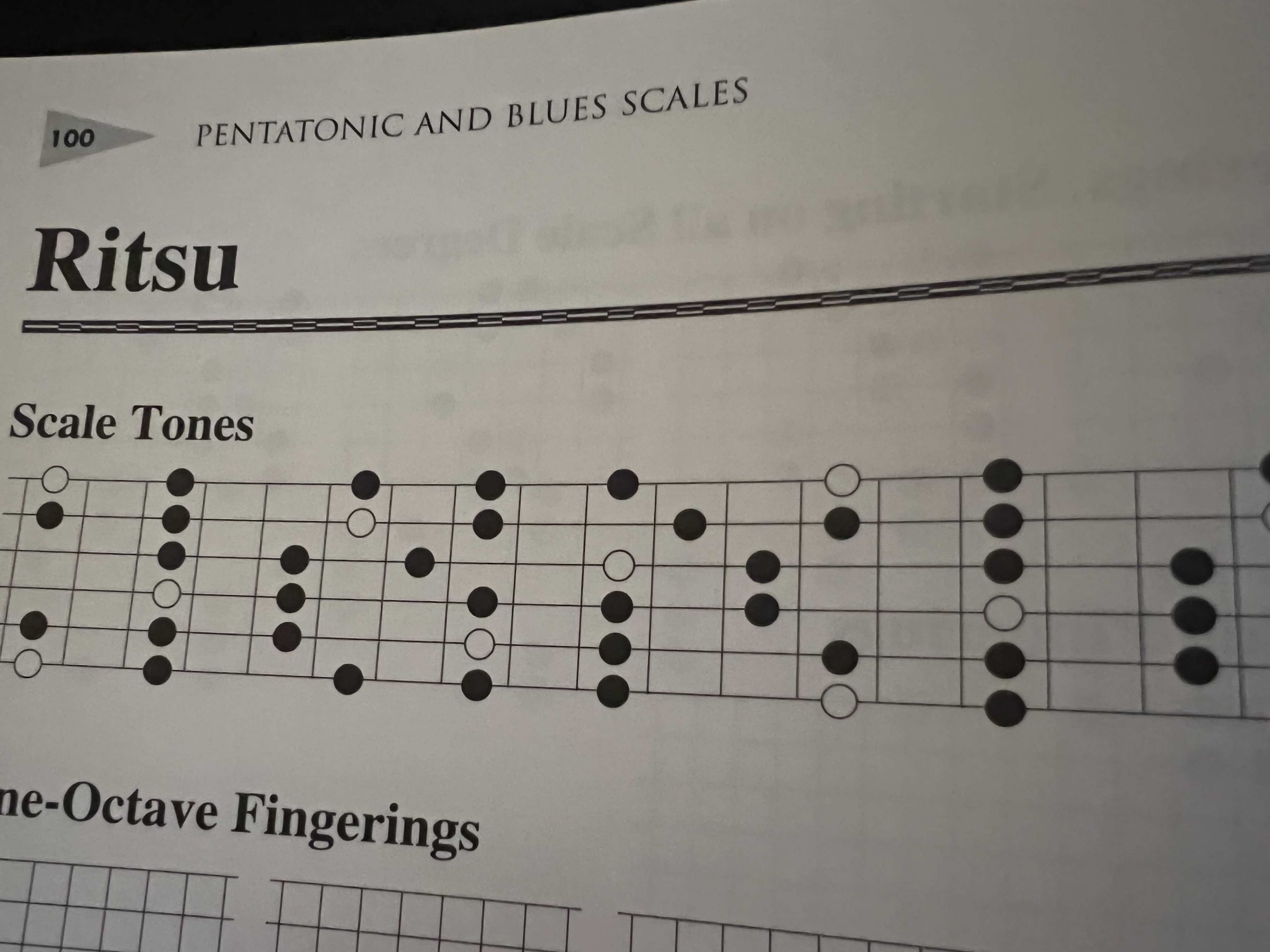
The Ritsu Scale
Instead of calling it “Form 4” of the major pentatonic scale, let us name this scale shape as the above “Ritsu scale”. In this context, its scale formula is:
Root, 2nd, 4th, 5th, 6th.
This is the penultimate pentatonic scale in this family.
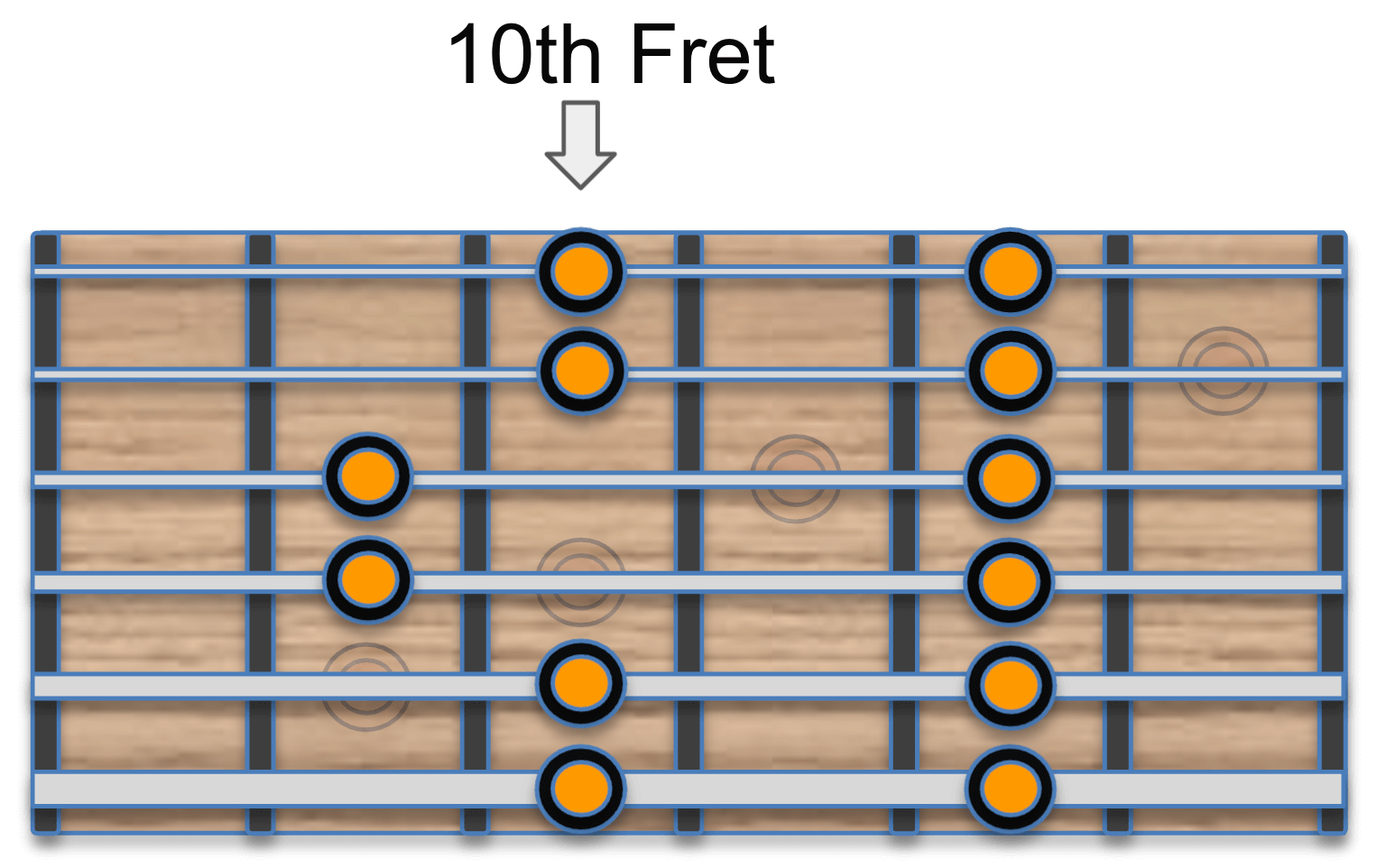
The Minor Pentatonic Scale
The last pentatonic scale in the series is the standard minor pentatonic scale. Since this scale already has a name we will stick to it for our learning in this course.
Now that we have completely labelled all 5 scale shapes in this series, we shall need to rename the entire series itself. In the past, some guitarists consider the major pentatonic scale and the minor pentatonic scale as separate scales. Some guitarists however recognise both as belonging to the same family.

Unfortunately, the name of that family is not clearly defined. Is it the Major pentatonic scale family or the minor pentatonic scale family?
The “Standard Pentatonic” Scale Family
It is our intention to categorise these 5 scale shapes as belonging to the “Standard Pentatonic” Scale Family. The reason is simple. Up to this stage of learning, most guitarists have only known the major and minor pentatonic scales. The Hefni Pentatonic System will disclose 50 new altered pentatonic scales which are grouped into 10 different scale families. It will be important then, to distinguish between the scale families in terms of tonality. The standard pentatonic family of pentatonic scales will be seen as the 5 starting pillars of the Hefni Pentatonic System from which 2nd, 3rd and 4th degree pentatonic scales are derived.

The Major Pentatonic Scale

The Egyptian Scale

The Banshiki Cho Scale

The Ritsu Scale
(or Scottish Pentatonic-
or Ritusen Scale)

The Minor Pentatonic Scale
The above scale shapes (or fingerings) are shown in ascending order in the key of G. If we transpose this scale up or down the fretboard, the order of the scale shapes will remain albeit on different frets.
The next prerequisite to learning the Hefni Pentatonic System is what I call the “3 to 1 Rule for Guitar.”
